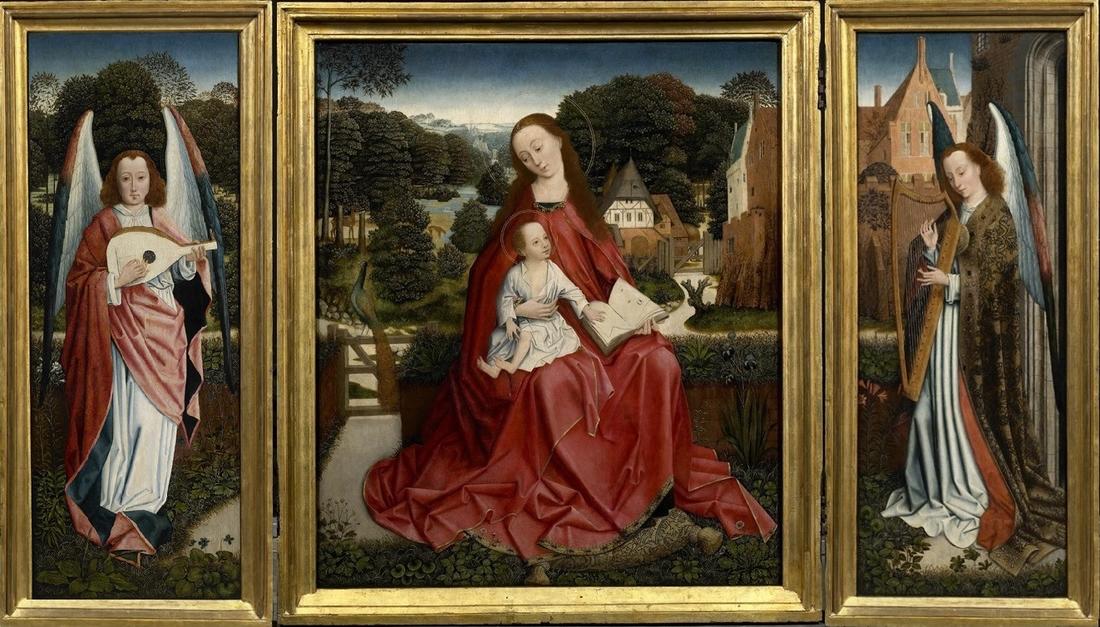Here is a "Madonna of Humility". This is the standard term for a painting in which the Virgin Mary is seated on the ground, in a sign of humility. On her lap is her son, Jesus Christ. He rests his hand on the Bible held by his mother.
Mary is in a central position, and the rest of the composition flows out symmetrically from her. She is wearing an eye-catching generous red coat. Red is a symbolically strong colour. It represents the love of Mary for her son, but also the future suffering and the blood of Jesus Christ.
The garden is separated from the rest of the landscape by a fence. This is no accident: in Christian imagery, the enclosed garden is an allusion to Mary's virginity. This verdant garden represents Mary's fertility. She conceived Jesus even though she was a virgin.
Finally, the reverse side of the wings also presents a scene linked to the Virgin. It depicts the Annunciation, when Mary learnt from the Angel Gabriel that she was pregnant. Today, the two figures are back to back, because the triptych is presented open. But in the Middle Ages, these paintings were usually closed. At this time, the two figures faced each other!
(Ref. P. 840)
Detail:
The reverse side of the triptych features parquetry, an interlocking pattern of wooden slats that prevents the wood from contracting or dilating as temperature and humidity levels rise and fall.

Here is a "Madonna of Humility". This is the standard term for a painting in which the Virgin Mary is seated on the ground, in a sign of humility. On her lap is her son, Jesus Christ. He rests his hand on the Bible held by his mother.
Mary is in a central position, and the rest of the composition flows out symmetrically from her. She is wearing an eye-catching generous red coat. Red is a symbolically strong colour. It represents the love of Mary for her son, but also the future suffering and the blood of Jesus Christ.
The garden is separated from the rest of the landscape by a fence. This is no accident: in Christian imagery, the enclosed garden is an allusion to Mary's virginity. This verdant garden represents Mary's fertility. She conceived Jesus even though she was a virgin.
Finally, the reverse side of the wings also presents a scene linked to the Virgin. It depicts the Annunciation, when Mary learnt from the Angel Gabriel that she was pregnant. Today, the two figures are back to back, because the triptych is presented open. But in the Middle Ages, these paintings were usually closed. At this time, the two figures faced each other!
(Ref. P. 840)
Detail:
The reverse side of the triptych features parquetry, an interlocking pattern of wooden slats that prevents the wood from contracting or dilating as temperature and humidity levels rise and fall.